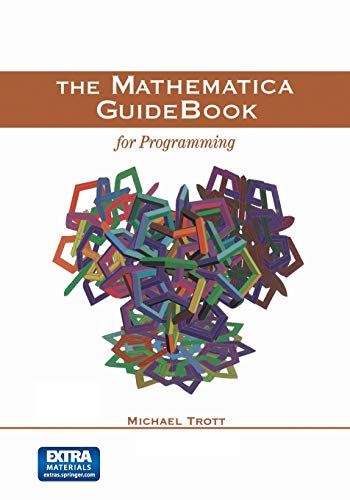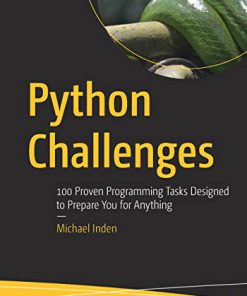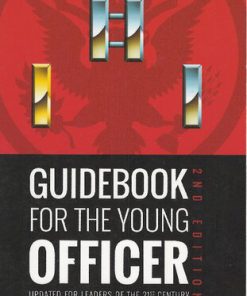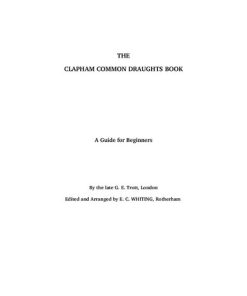The Mathematica GuideBook for Programming 2004th Edition by Trott Michael 1441985034 9781441985033
$50.00 Original price was: $50.00.$25.00Current price is: $25.00.
The Mathematica GuideBook for Programming 2004th Edition by Trott Michael – Ebook PDF Instant Download/Delivery: 1441985034, 9781441985033
Full download The Mathematica GuideBook for Programming 2004th Edition after payment

Product details:
ISBN 10: 1441985034
ISBN 13: 9781441985033
Author: Michael Trott
The Mathematica GuideBook for Programming 2004th Table of contents:
Chapter 1 is an overall introduction to Mathematica. It gives an outline of Mathematica’s syntax, its program- ming, graphic, numeric, and symbolic capabilities, and shows how these capabilities naturally work together. This chapter contains a sampler of smaller examples that are discussed throughout the four Guide Books.
The five subsequent chapters deal with the structure of Mathematica expressions and with Mathematica as a programming language. This includes the hierarchical construction of all Mathematica objects from symbolic expressions (all of the form head [argument]), the ultimate building blocks of expressions (which are numbers, symbols, and strings), the definition of functions, rule applications, the recognition of patterns and their efficient application, program flows and program structure, the manipulation of lists (which are the universal containers for Mathematica expressions of all kinds), and a number of topics specific to the Mathematica programming language. Its powerful functional programming constructs are covered in great detail.
Chapter 2 discusses the basic structure of Mathematica expressions, the uniform recursive way to build them. and how to analyze expressions. To have a minimal working set of mathematical functions, we discuss the basic arithmetic operations, as well as the trigonometric and hyperbolic functions and their inverses. Emphasis is given to the branch cut structure of compositions and of inverse functions in Mathematica. This is an important area where paper and pencil calculations deviate from computer mathematics-calculations. In addition, the basics of machine and high-precision numericalization of expressions are discussed.
Chapter 3 introduces patterns, immediate and delayed function definitions, attributes of functions (representing such properties as commutativity and associativity), and functions within the A-calculus.
Chapter 4 deals with Mathematica as a programming system and its evaluation semantics. The various scoping constructs are analyzed and compared in detail. The evaluation order of expressions is explained carefully.
Chapter 5 discusses advanced patterns and rule-based programming. We also review Boolean expressions and give a larger set of examples showing how the powerful paradigm of rule-based programming can be used for short and elegant solutions of various problems.
Chapter 6 discusses lists and operations to manipulate them. Because vectors and matrices are represented as lists in Mathematica, linear algebra functions are also discussed. The possibility of manipulating lists as whole entities allows for very concise and effective programs. The last section analyzes a number of Mathematica programming examples in order to determine the top ten Mathematica commands. (Note that the GuideBooks use the terms ‘command’ and ‘function’ interchangeably.)
The Appendix contains some general references regarding algorithms and applications of computer algebra and Mathematica.
The Mathematica GuideBook to Programming deals mostly with Mathematica-related issues. General program- ming issues, not specific to Mathematica, such as data structures, program flows, etc., and mathematics and physics applications are only touched on occasionally.
People also search for The Mathematica GuideBook for Programming 2004th :
the mathematica journal
introduction to mathematica
mathematica book pdf
mathematica 1.0
Tags:
Michael Trott,Mathematica GuideBook,Programming
You may also like…
Uncategorized
Politics & Philosophy - Women's Studies
Feminist Activism and Platform Politics 1st Edition Verity Anne Trott
Computers - Programming
Computers - Applications & Software
Business & Economics - Management & Leadership
Innovation Management and New Product Development 7th Edition Paul Trott
Arts - Photography
Uncategorized
Guidebook for the Young Officer 2nd Edition by Ltc Frank J Caravella ISBN 0983174598 9780983174592
Housekeeping & Leisure - Games: Board Games
The Clapham Common Draughts Book A Guide for Beginners 1st Edition by Trott
Computers - Programming











